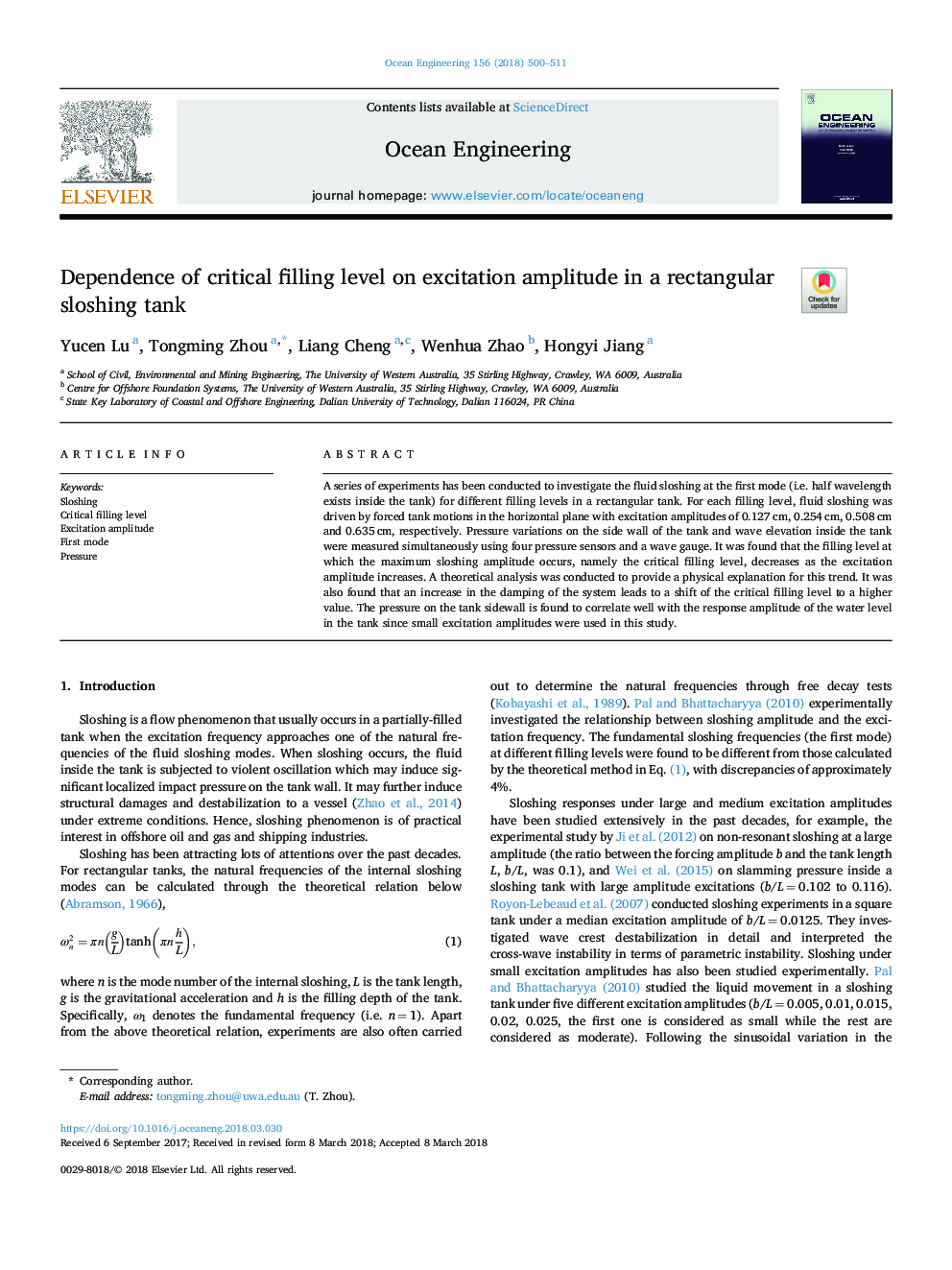| Article ID | Journal | Published Year | Pages | File Type |
|---|---|---|---|---|
| 8062757 | Ocean Engineering | 2018 | 12 Pages |
Abstract
A series of experiments has been conducted to investigate the fluid sloshing at the first mode (i.e. half wavelength exists inside the tank) for different filling levels in a rectangular tank. For each filling level, fluid sloshing was driven by forced tank motions in the horizontal plane with excitation amplitudes of 0.127â¯cm, 0.254â¯cm, 0.508â¯cm and 0.635â¯cm, respectively. Pressure variations on the side wall of the tank and wave elevation inside the tank were measured simultaneously using four pressure sensors and a wave gauge. It was found that the filling level at which the maximum sloshing amplitude occurs, namely the critical filling level, decreases as the excitation amplitude increases. A theoretical analysis was conducted to provide a physical explanation for this trend. It was also found that an increase in the damping of the system leads to a shift of the critical filling level to a higher value. The pressure on the tank sidewall is found to correlate well with the response amplitude of the water level in the tank since small excitation amplitudes were used in this study.
Related Topics
Physical Sciences and Engineering
Engineering
Ocean Engineering
Authors
Yucen Lu, Tongming Zhou, Liang Cheng, Wenhua Zhao, Hongyi Jiang,
